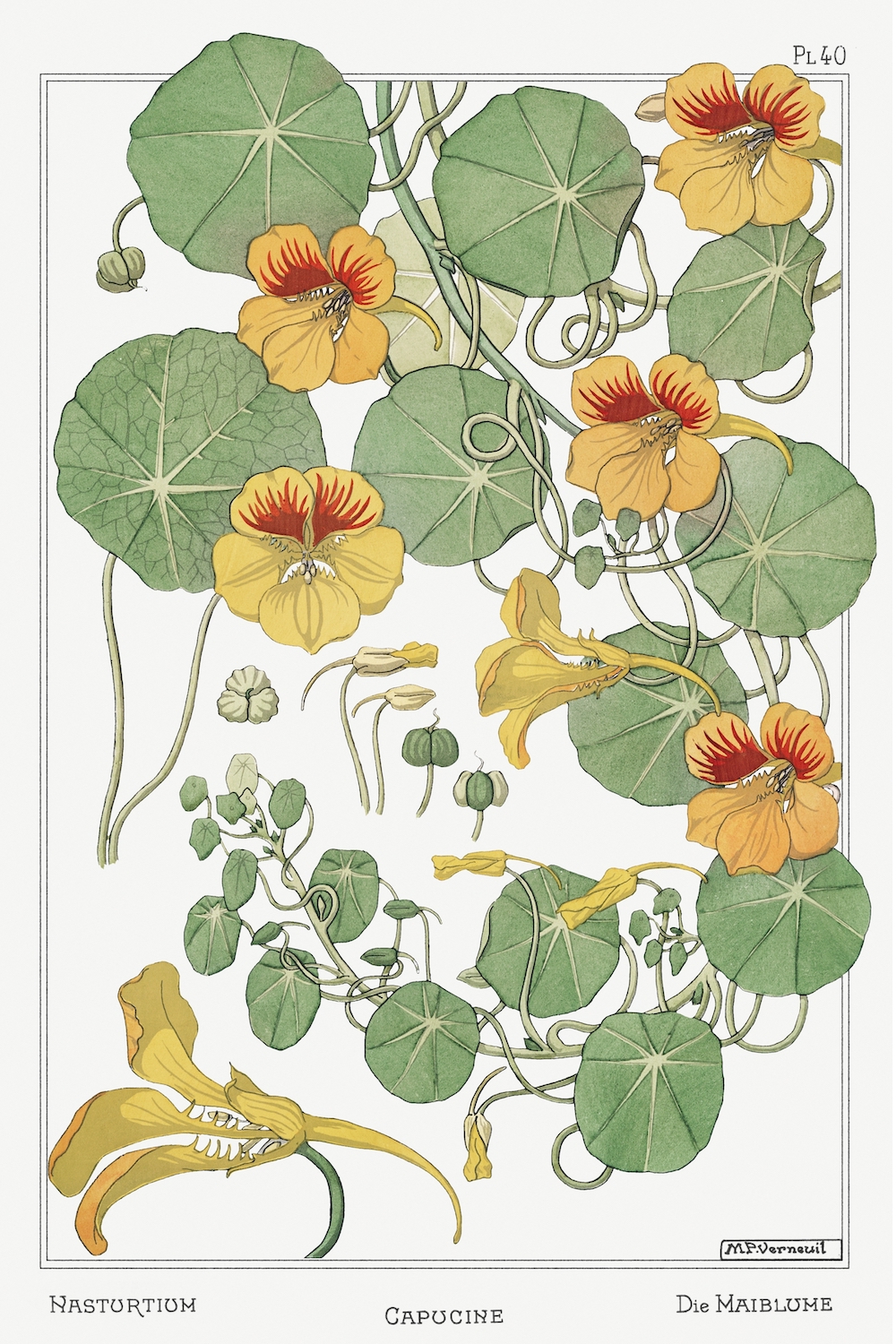“The art of drawing is not the art of observing forms and objects alone, it is not mere mimicry of these objects; it is the art of knowing how far and wherein, and with what just limitations, those forms and objects can be reproduced in a picture, or in a decorative work” – Eugène Grasset, 1896
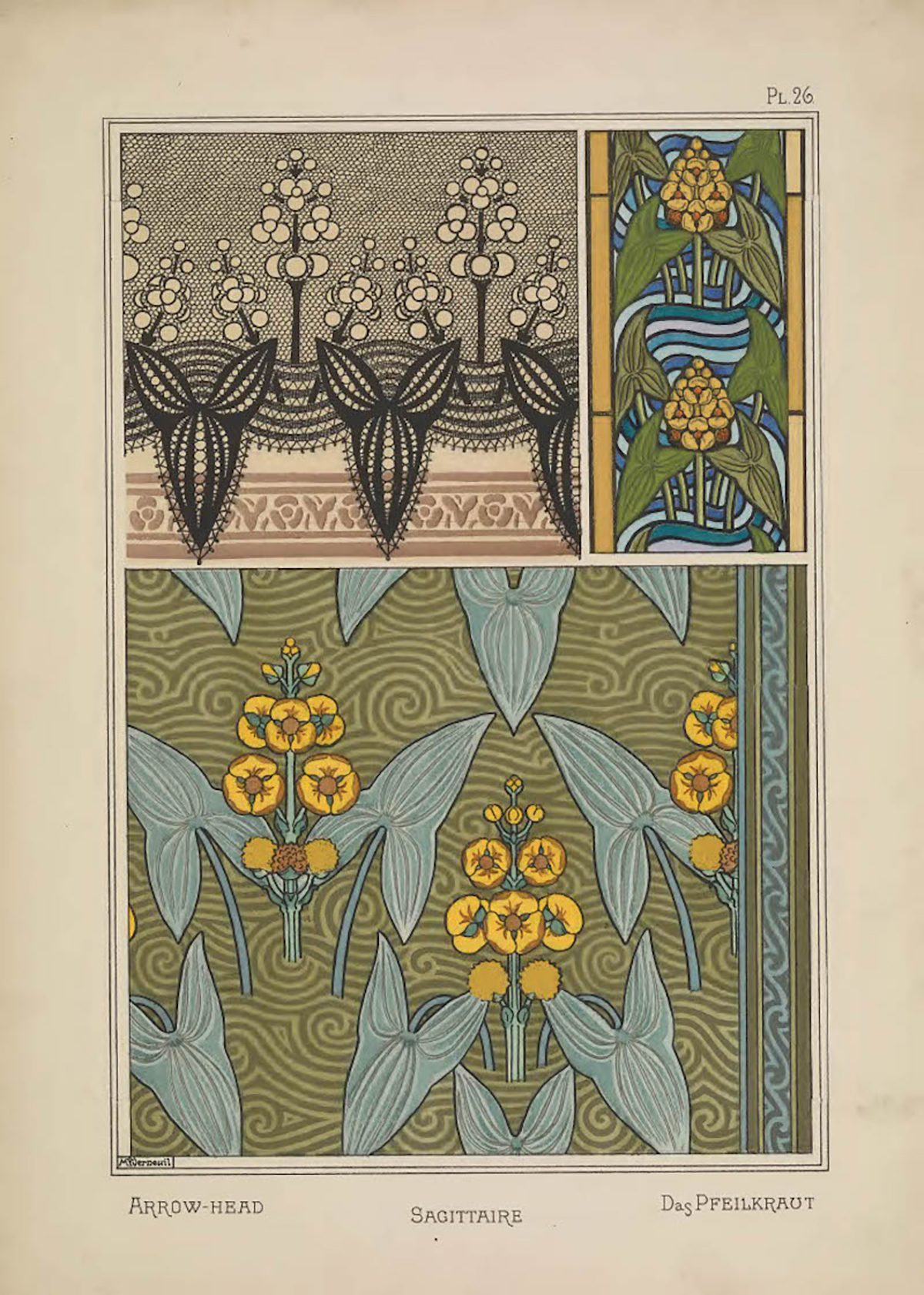
In Eugène Grasset’s Plants and Their Application to Ornament (1896) we see 24 common flowering plants transformed into the Art Nouveau style on 72 colour plates. Published by Librairie centrale des beaux-arts, the plates were created by Grasset’s students at the École Guérin in response to the Franco-Swiss pioneer of Art Nouveau’s direction:
An artisan is above all one who has learnt the nature of the vehicle he works in. The next step in his education is the study of natural forms: the step after that is to study and understand the limitations imposed by art principles upon these natural forms when he comes to employ them pictorially or in ornamentation. The draughtsman who fails to apprehend the laws which tell him when to go forward and when to use restraint in representing the object as he sees it, is as great a blunderer as he who mis-draws a tree branch or the features and limbs of his model, or he who confuses his perspective. The art of drawing is not the art of observing forms and objects alone, it is not mere mimicry of these objects; it is the art of knowing how far and wherein, and with what just limitations, those forms and objects can be reproduced in a picture, or in a decorative work.

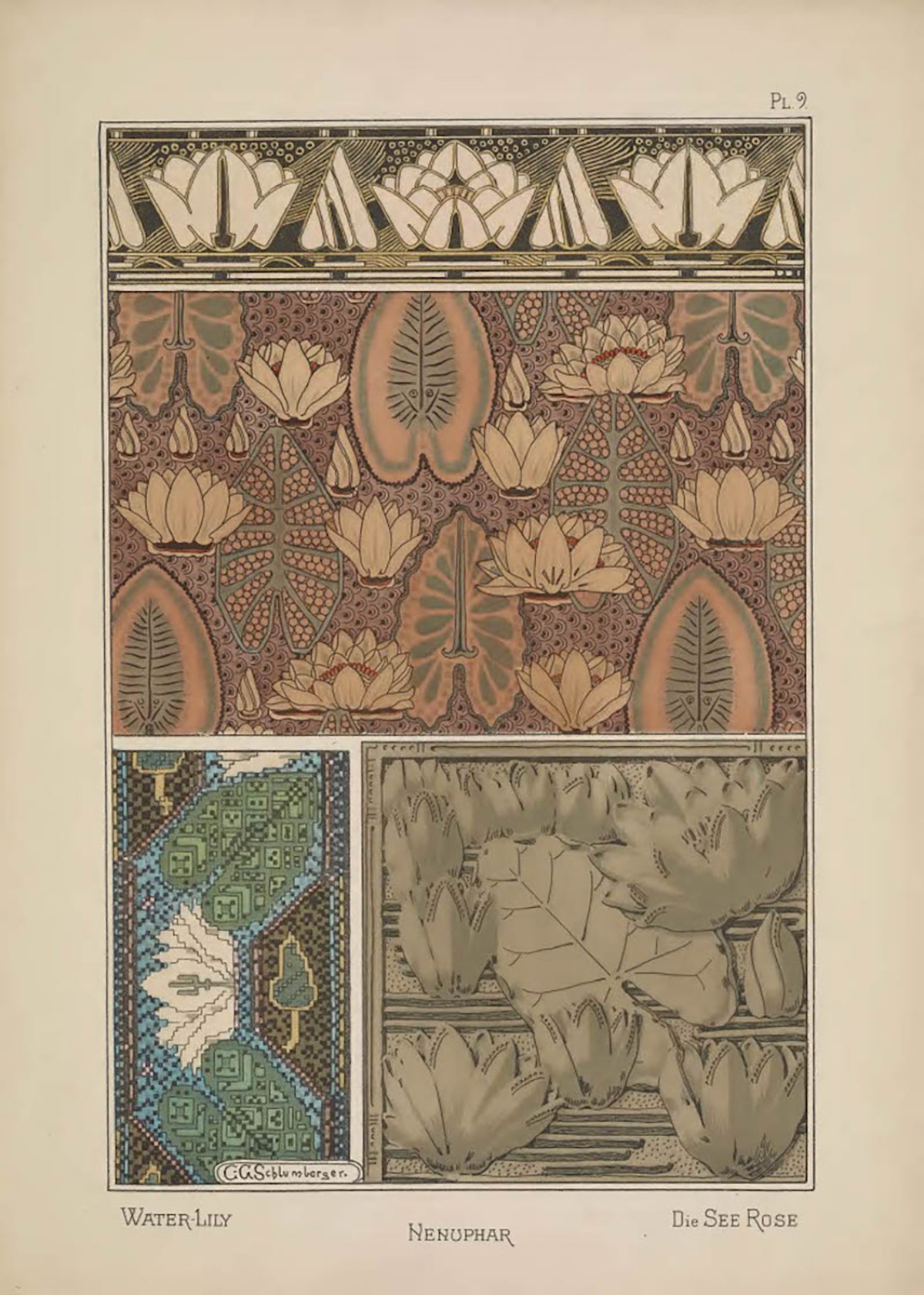
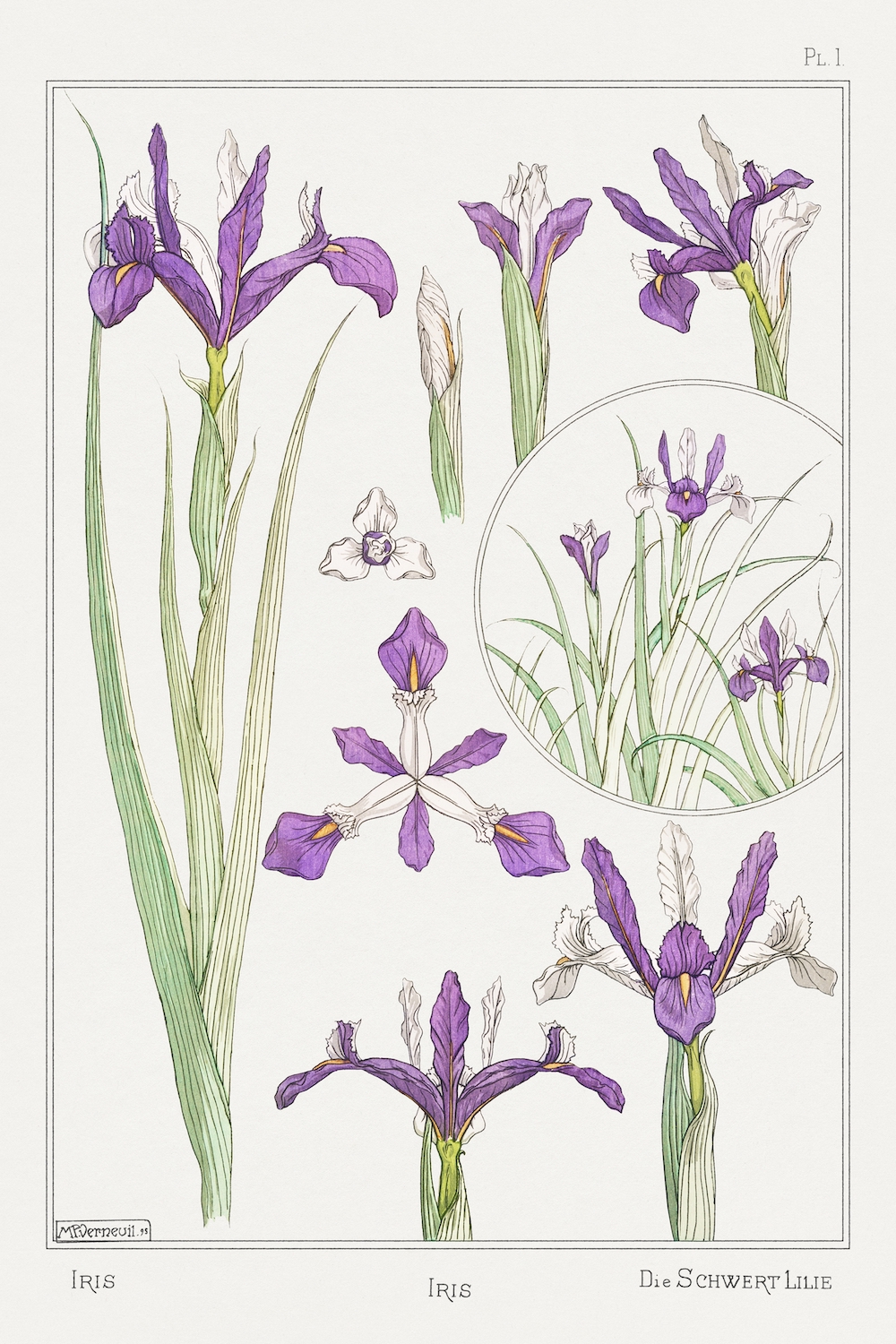
A realistic botanical illustration is followed by two stylized plates detailing the plant motif’s application to various decorative patterns and household objects.
Beautiful lines are the foundation of all beauty. In a work of art, whatever it be, apparent or hidden symmetry is the visible or secret cause of the pleasure we feel. Everything that is created must have some repetition in its parts to be understood, retained in the memory, and perceived as a whole
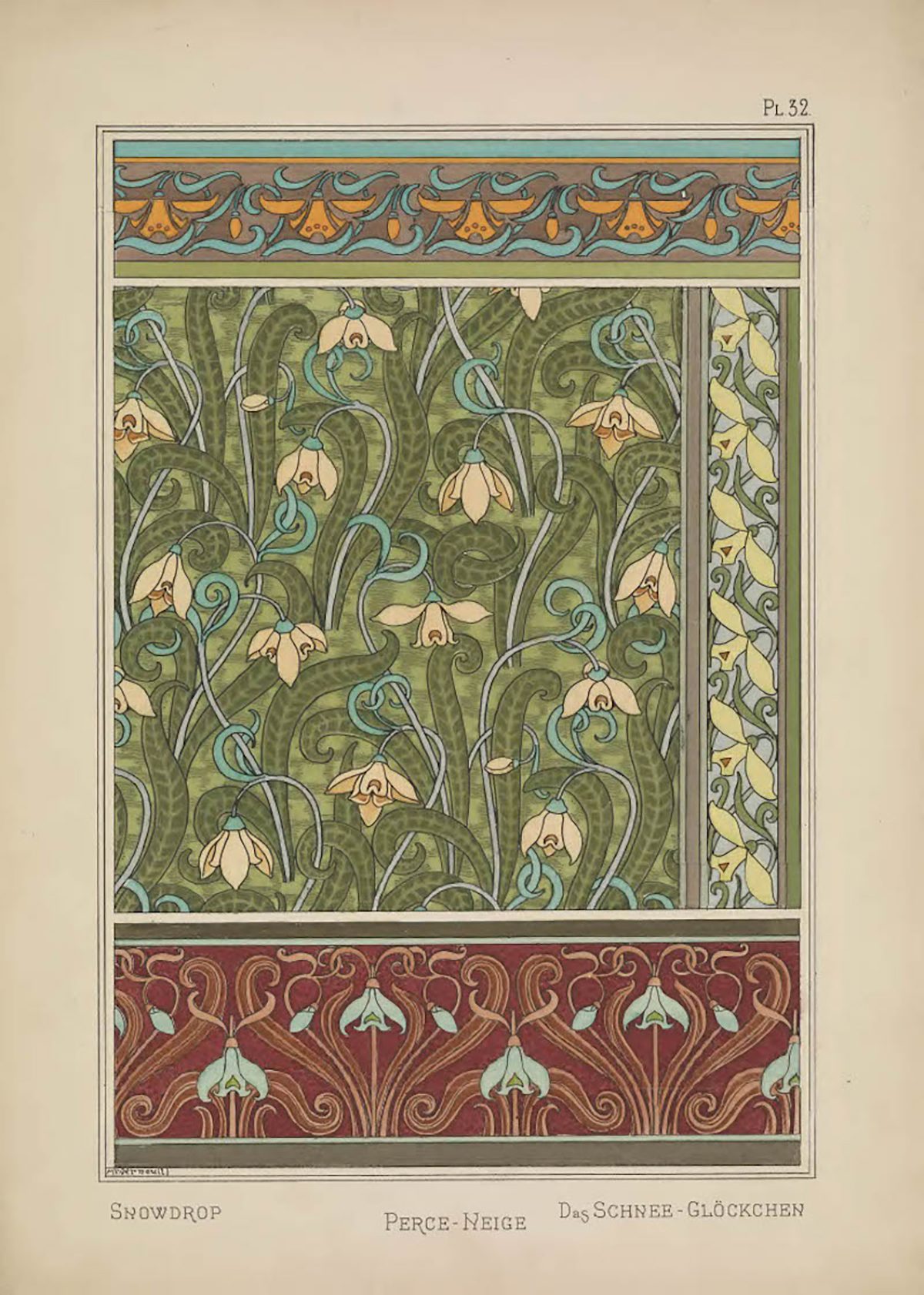
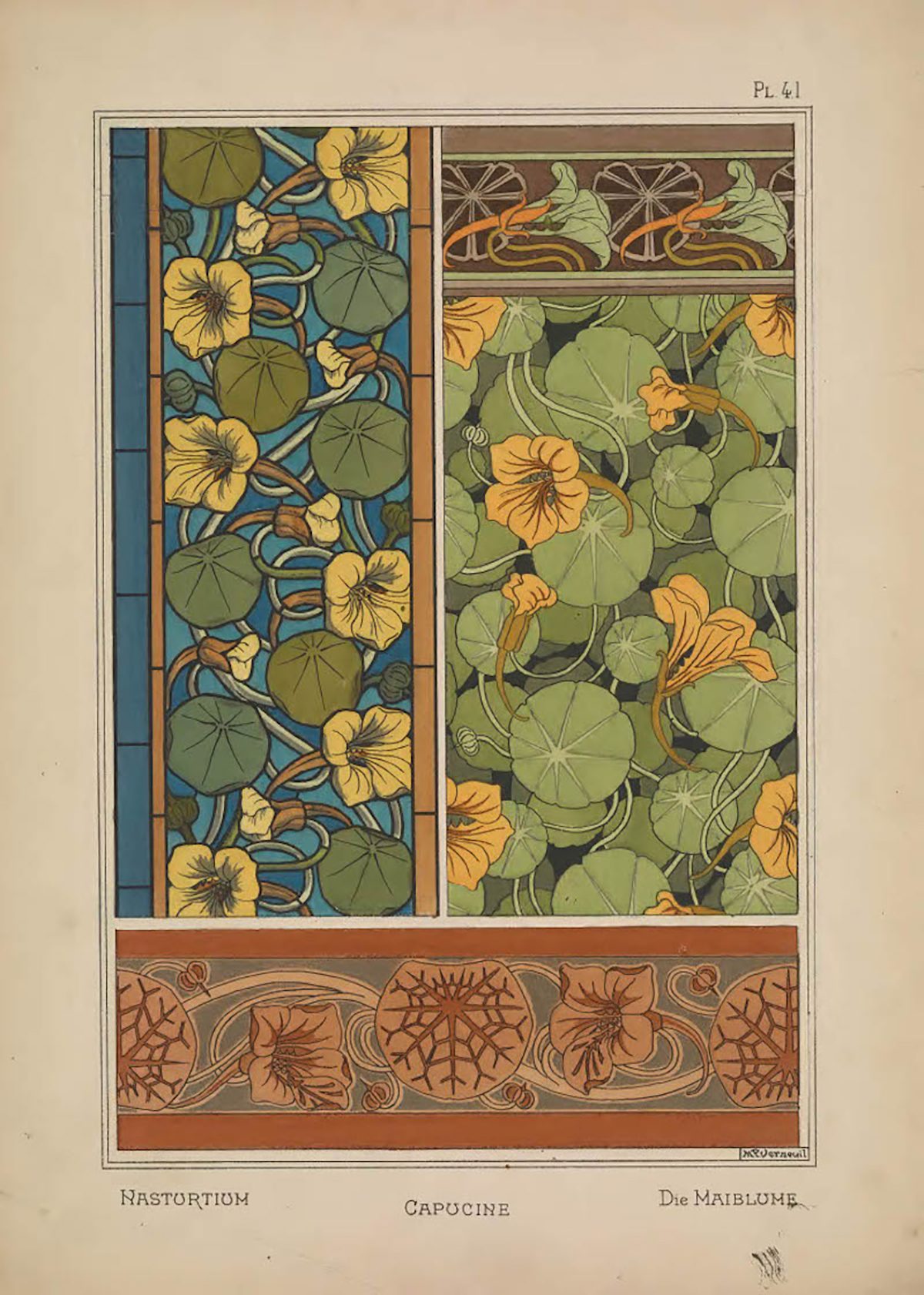
Grasset student Maurice Pillard Verneuil (1869–1942) worked on the book:
It is no longer the nature (artists) see that they represent, that they transcribe, but the nature that they aspire to see; nature more perfect and more beautiful and of which they have the interior vision.
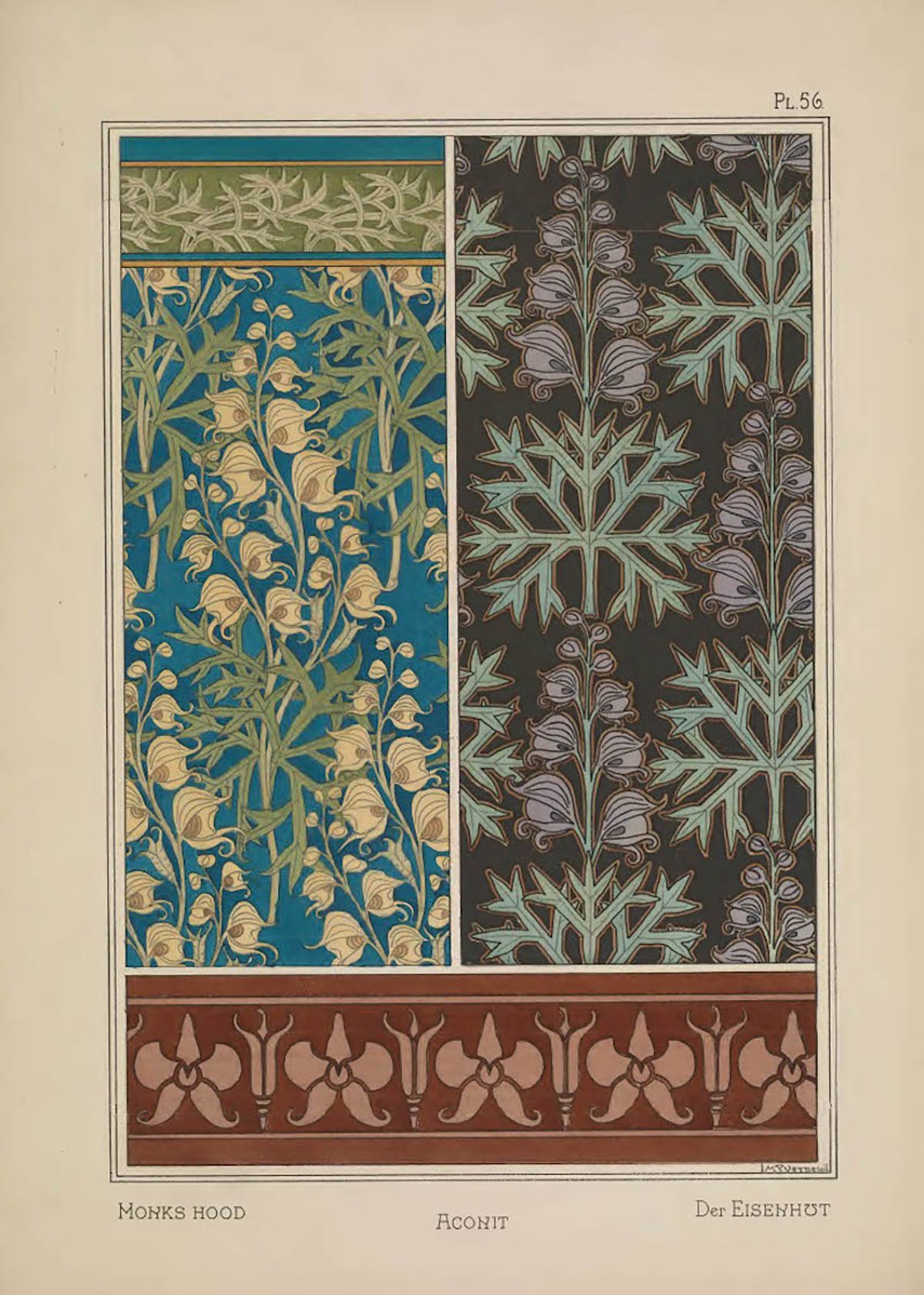
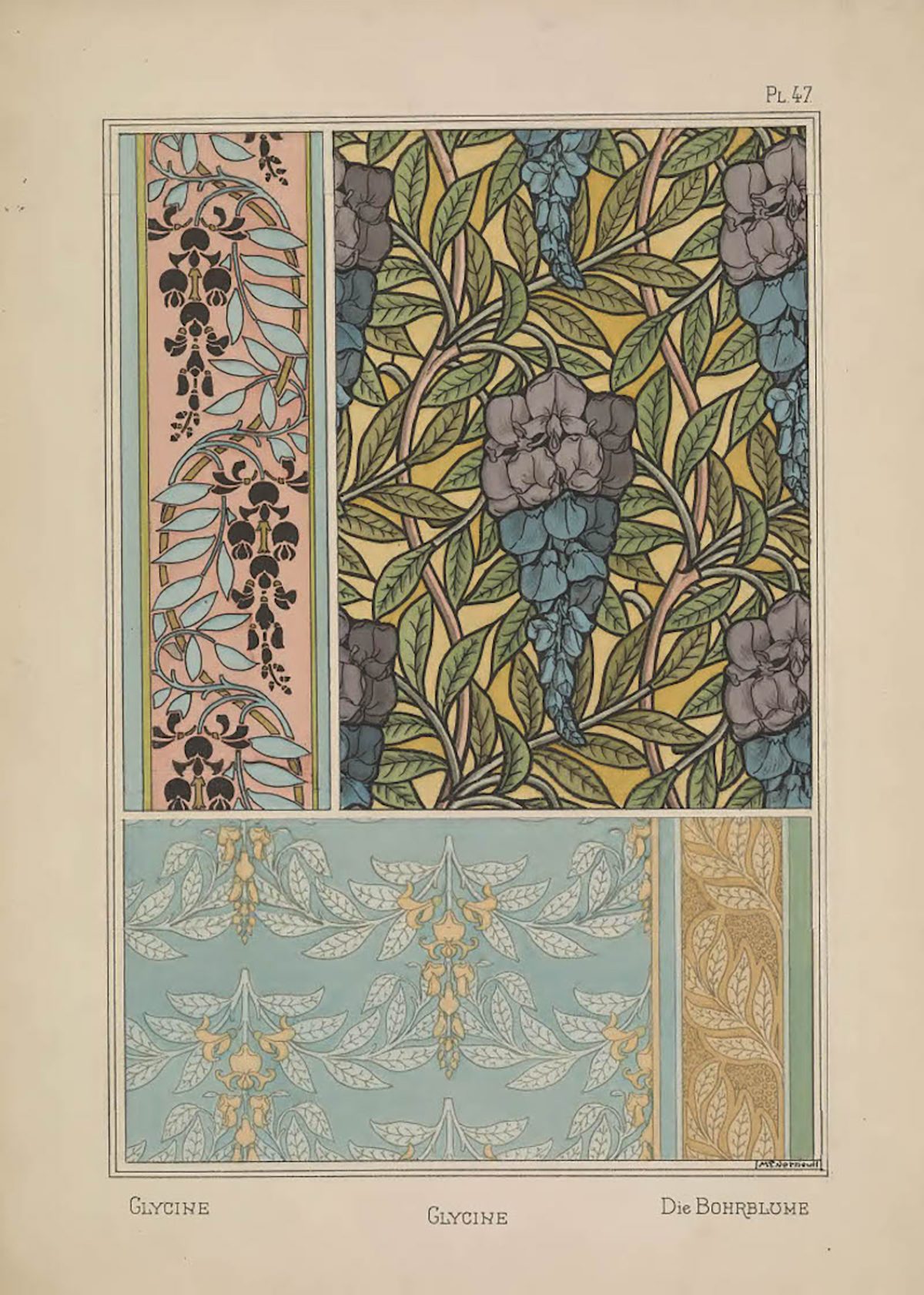
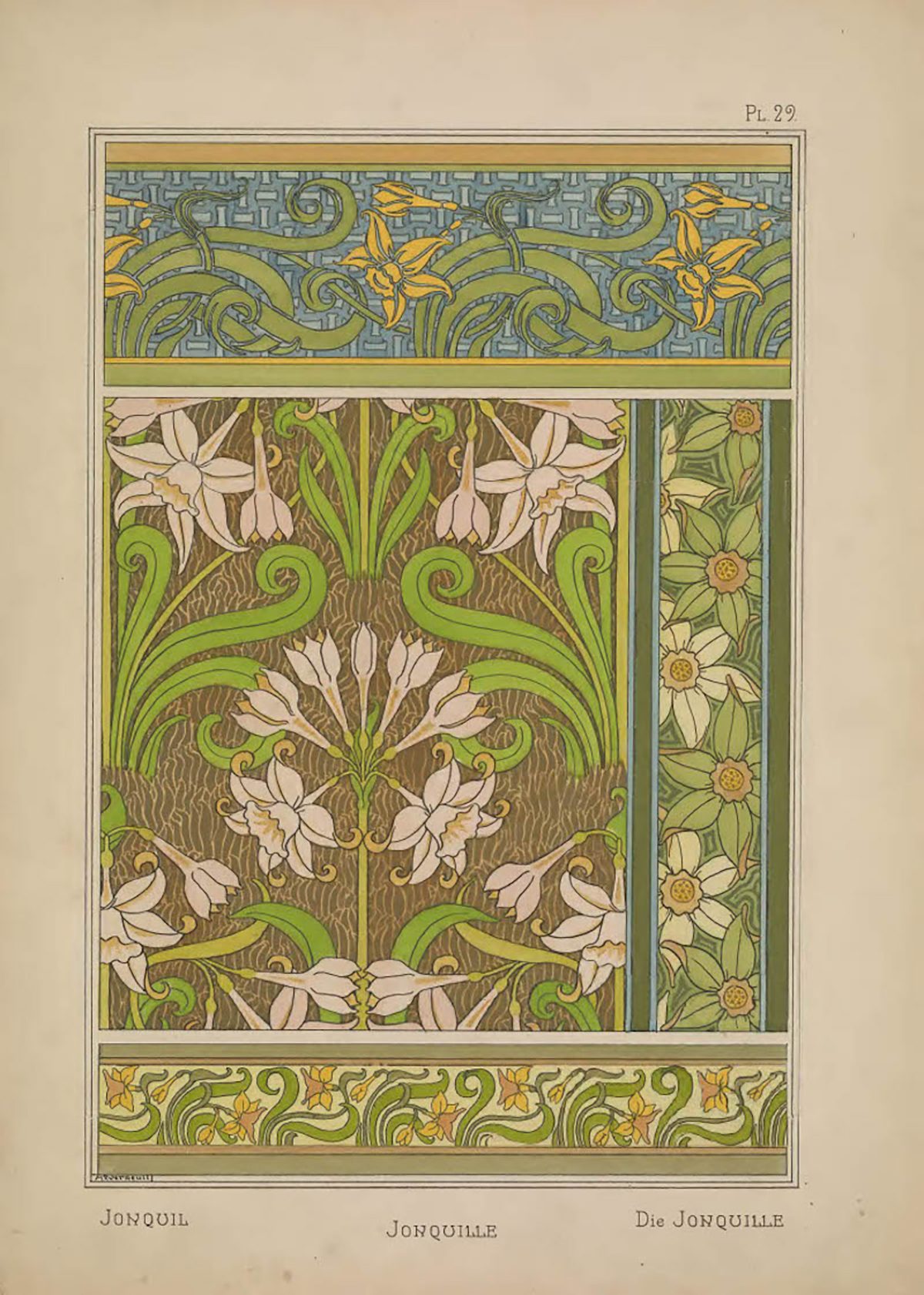
Eugene Grasset (Lausanne, Switzerland May 25, 1841-October 23, 1917 Sceaux, France) studied drawing under Francois-Louis David Bocion (1828-90), a student of Charles Gleyre. In 1861, Grasset moved to Zurich to study architecture and sculpture. After periods in Marseille and Egypt, he worked in Paris as an illustrator, then as a designer of furniture, posters, jewellery and potage stamps. Known for his poster lithographs, he was one of 97 artists who contributed to Jules Cheret’s Maîtres de l’Affiche, the best selling Belle Époque book of posters.
In the 1880s, Grasset produced posters for many American companies and worked with Louis Comfort Tiffany, who used his designs as inspiration for stained glass windows. Grasset taught at Paris art schools in Paris, and exhibited at the Salon des Cent (1894), Salon des Artistes Décorateurs (1904) and the 1900 Universal Exposition.




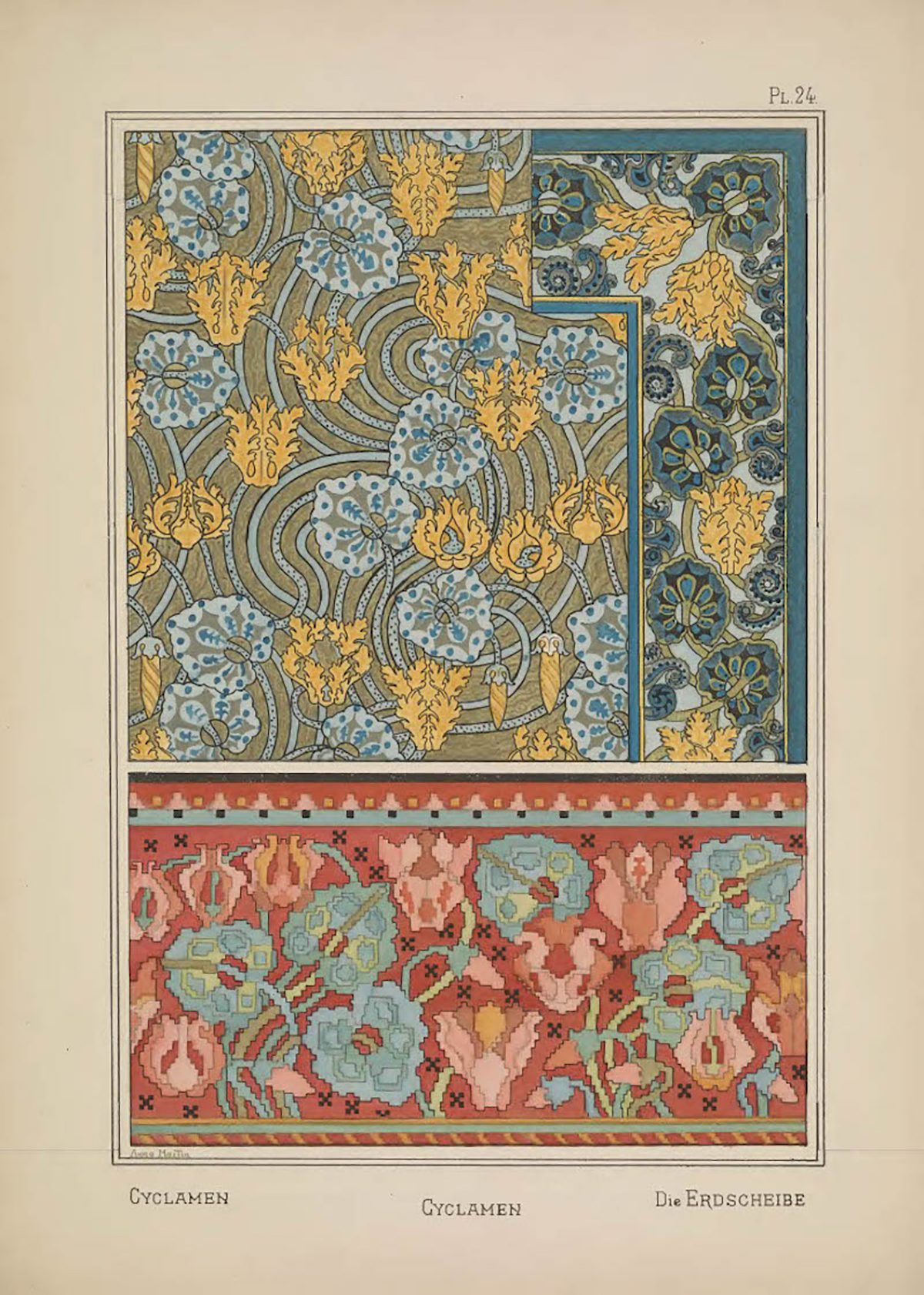
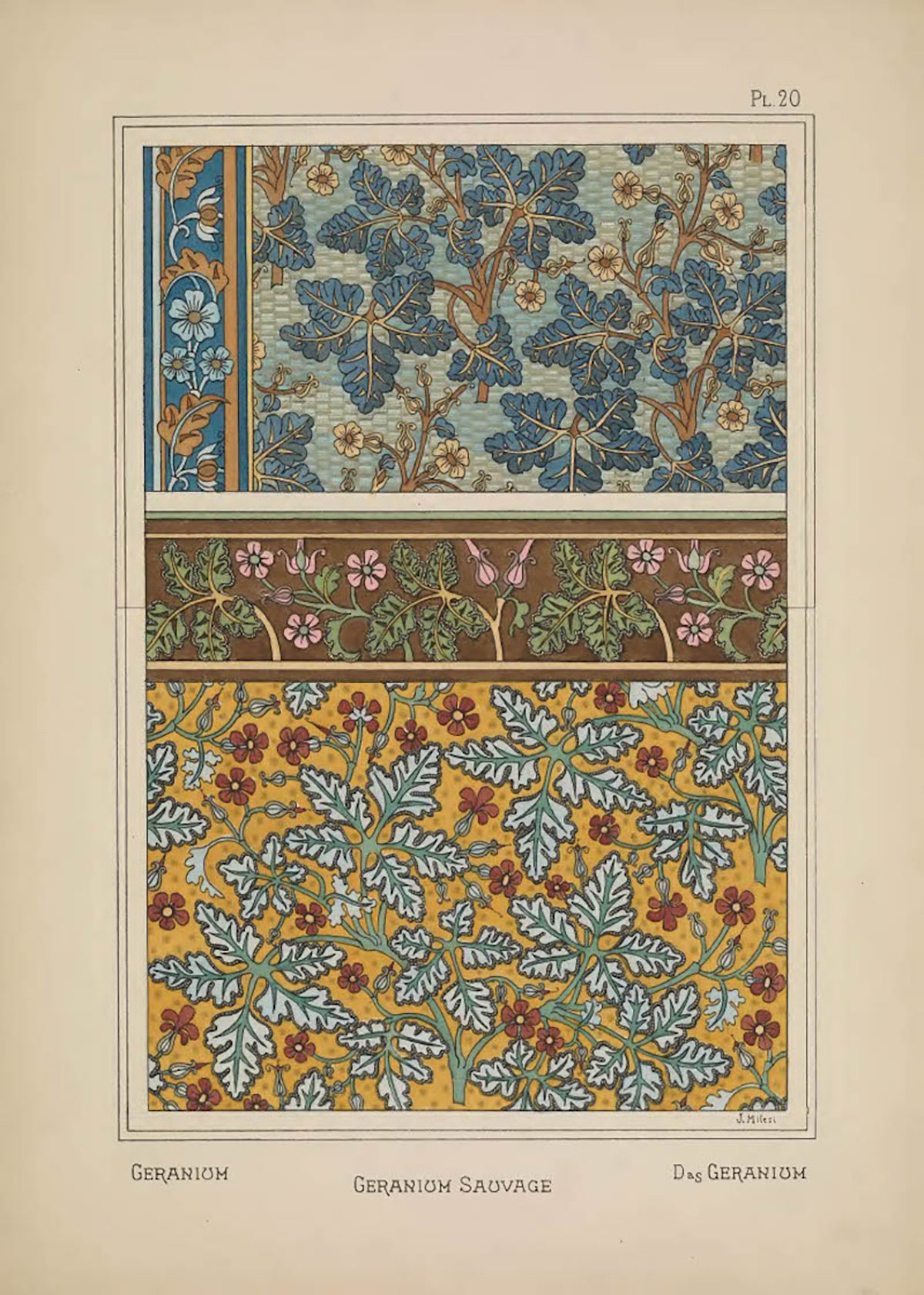
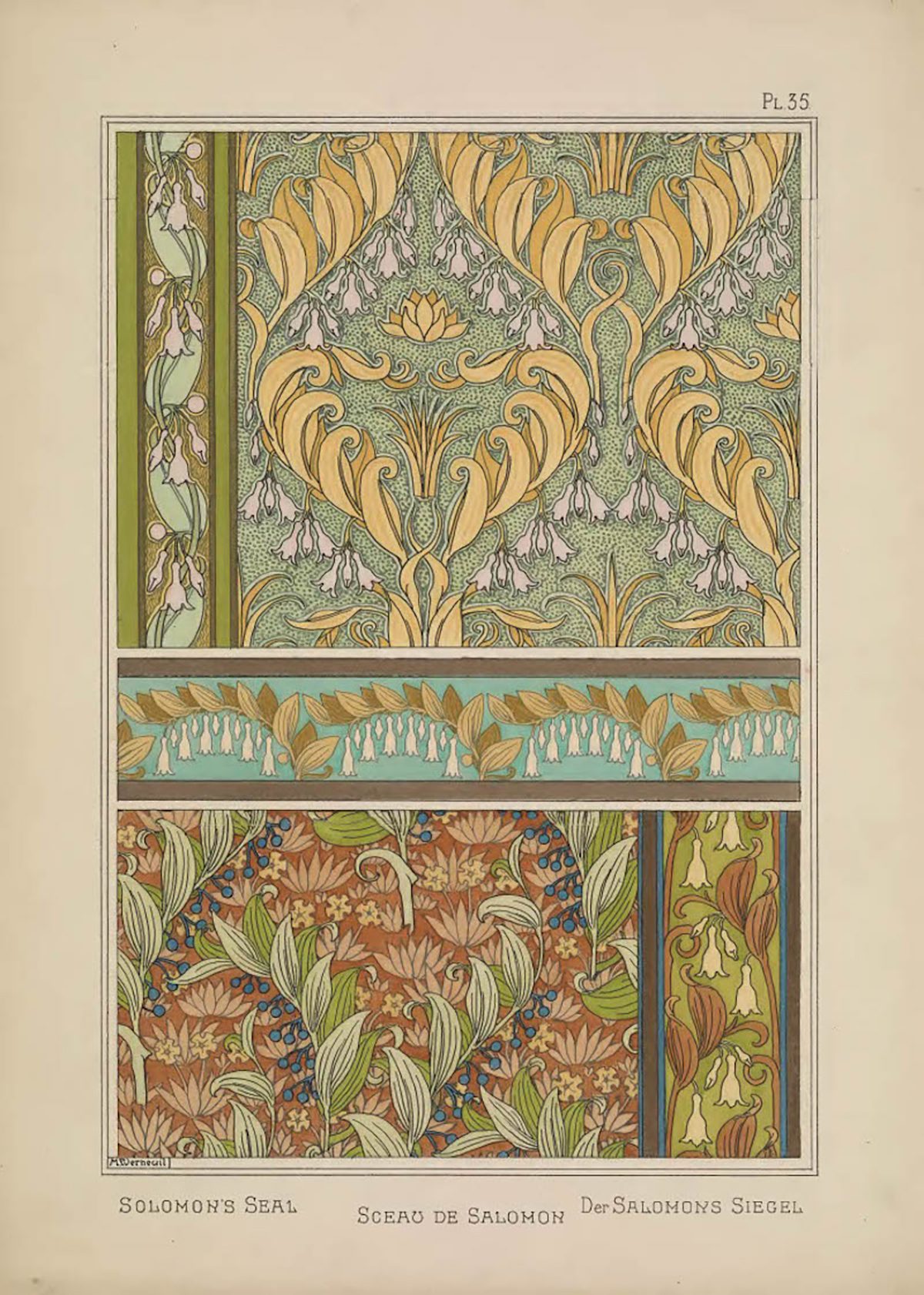
See also:
Samarkande : 20 Gorgeous Art Deco and Art Nouveau Prints by E. A. Seguy – 1914, The Beautiful Pochoir Butterfly Prints by Émile Alain Séguy and work by Alphonse Mucha.
More: Eugène Grasset’s Plants and Their Application to Ornament as part of the New York Public Library’s Digital Collections here. Or find illustrations at RawPixel.
Would you like to support Flashbak?
Please consider making a donation to our site. We don't want to rely on ads to bring you the best of visual culture. You can also support us by signing up to our Mailing List. And you can also follow us on Facebook, Instagram and Twitter. For great art and culture delivered to your door, visit our shop.

